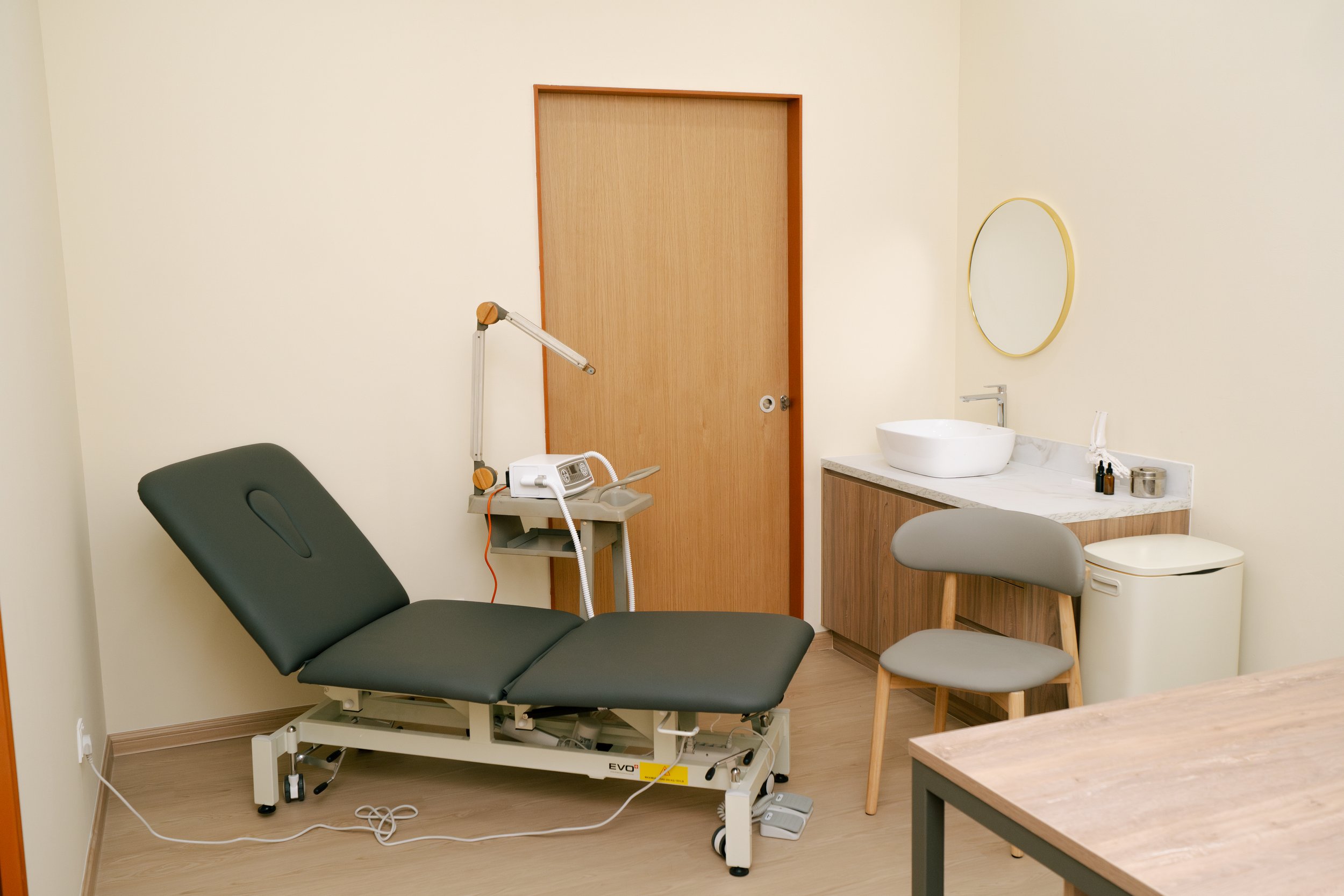
Peroneal Tendinopathy
What Is Peroneal Tendinopathy?
Peroneal tendinopathy is the irritation, degeneration or inflammation of the peroneal tendons, which run behind the outer ankle bone (lateral malleolus) and down the outer side of the foot. These tendons play a key role in stabilising the ankle, preventing ankle sprains, and supporting the arch of your foot during movement.
There are two peroneal tendons:
Peroneus longus: wraps under the foot to attach near the arch.
Peroneus brevis: attaches to the base of the 5th metatarsal (outside of the foot).
When these tendons are overused or injured, the result is pain, swelling, and difficulty with walking, balance, and physical activity.
Causes of Peroneal Tendinopathy
Peroneal tendinopathy is most often caused by overuse, poor biomechanics, or previous ankle injuries. Common contributing factors include:
Ankle sprains, especially repetitive sprains that stretch or strain the peroneal tendons
High-arched feet (pes cavus), which place more strain on the peroneal tendons
Sudden increase in activity levels, particularly with running or jumping
Poor ankle stability or weak surrounding muscles
Worn-out or unsupportive footwear
Repetitive lateral movements such as those in basketball, tennis or trail running
Improper running technique or uneven surfaces
Symptoms of Peroneal Tendinopathy
Symptoms typically develop gradually and worsen with activity. You may notice:
Pain along the outer ankle, especially just behind the fibula (outer ankle bone)
Pain that worsens with activity and improves with rest
Swelling or tenderness along the outer foot or ankle
Weakness or instability in the ankle
Pain when standing on tiptoes or walking on uneven surfaces
A popping sensation around the back of the ankle
Pain when resisting ankle eversion (turning the sole of your foot outward)
In some cases, visible foot or ankle instability
Diagnosing Peroneal Tendinopathy
At KL Foot Specialist Podiatry, diagnosis begins with a detailed physical examination and review of your medical and activity history. We assess:
Tenderness along the peroneal tendons
Range of motion in the ankle
Gait (walking) pattern and foot posture
Muscle strength and joint flexibility
We may refer you for ultrasound or MRI imaging to assess for tendon damage, inflammation, or subluxation (where the tendon slips out of position), especially in chronic or complex cases.
Treatment for Peroneal Tendinopathy
Our approach to treating peroneal tendinopathy is conservative and non-surgical, focused on healing the tendon, relieving pain, and restoring strength and function.
Step 1: Reduce Pain and Inflammation
RICE Protocol: Rest, Ice, Compression, Elevation
Activity modification: Avoid running, jumping or uneven terrain until pain subsides
Temporary ankle bracing or taping for tendon support
Anti-inflammatory medication, as recommended by your doctor
Step 2: Support and Stabilise
Supportive footwear: Proper shoes with lateral ankle support and cushioning
Custom foot orthotics: Orthotics can help correct high arches or other biomechanical issues that place stress on the peroneal tendons
DolorClast® High Power Laser Therapy: A painless, non-invasive laser that promotes tissue healing, reduces inflammation and accelerates recovery
DolorClast® Shockwave Therapy: Stimulates blood flow and helps heal chronic tendon issues
Step 3: Rebuild Strength and Prevent Recurrence
Stretching and strengthening program tailored to the ankle, calf and peroneal muscles
Balance and proprioception training to improve ankle stability and reduce re-injury risk
If the condition is advanced or causing significant instability, a moon boot may be temporarily prescribed. In very rare cases, surgery may be considered if there is a tear or persistent tendon subluxation.
What Happens If Peroneal Tendinopathy Is Left Untreated?
Without proper care, peroneal tendinopathy can worsen over time and lead to:
Chronic pain and inflammation
Reduced ankle stability
Increased risk of ankle sprains
Progression to peroneal tendon tear or rupture
Loss of function or difficulty returning to sports or physical activity
Preventing Peroneal Tendon Injuries
Once your pain has resolved, our podiatrists will guide you in how to maintain long-term foot and ankle health. Preventative strategies include:
Wearing supportive shoes designed for your foot type
Using orthotics to correct biomechanical problems and offload strain
Gradually increasing training intensity to avoid tendon overload
Incorporating ankle stability and strength exercises into your routine
Replacing old footwear regularly to maintain optimal support
Avoiding repetitive lateral movements when fatigued or on uneven ground
Why Choose KL Foot Specialist Podiatry?
We specialise in treating tendon injuries like peroneal tendinopathy using a holistic and personalised approach. Our combination of hands-on therapies, advanced technology like DolorClast® High Power Laser Therapy and DolorClast® Shockwave Therapy, and expert biomechanical analysis ensures you get the care you need to return to your normal activities safely and confidently.
Book Your Assessment Today
Don’t ignore pain on the outside of your foot or ankle. The earlier you treat peroneal tendinopathy, the faster and more effectively you can heal. Book your appointment with our experienced podiatrists today and let us help you walk pain-free again.
